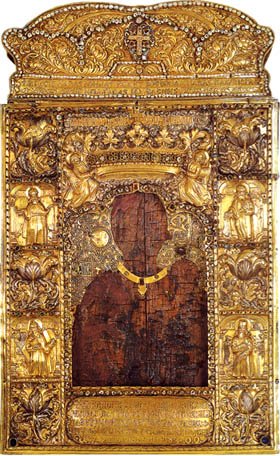THE HOLY ICON OF PANAGIA SOUMELA

The existing icon of Panagia Soumela was iconographed by the Evangelist Luke who was both a physician and an iconographer. According to tradition, whenever Luke drew icons of the Panagia, the Holy Mother was very pleased and blessed his works. Furthermore, she encouraged him to draw more icons. When Luke died, his disciple named Ananias, took the icon and transferred it to the Church in Athens that was dedicated to the Panagia. Here the icon was venerated as “Panagia Athiniotissa”.
At some point two Athenian monks were called by the Virgin to follow the Panagia Athiniotissa from the Church in Athens to Mount Mela in Pontus of Asia Minor, a region in current day Turkey. They were St. Barnabas, and his acolyte St. Sophronios.
At Mt. Mela, the icon was found in a cave at the end of the fourth century A.D. A monastery was built at this place to the glory of God, and the icon was renamed ‘Panagia Soumela’. The monastery was inaugurated by the Bishop of Trapezounta in 386 A.D. During the decline of the Byzantine Empire, the monastery served as a centre of education. The monastery was pillaged many times but was always rebuilt, with the latest construction occurring around 644 A.D.
Trapezounta was occupied by the Turks in 1461 and so was the monastery. Despite these difficult times, the monks remained in the monastery unshaken in their faith and tradition.
Excerpt from orthodox wiki. Link to full article below…
